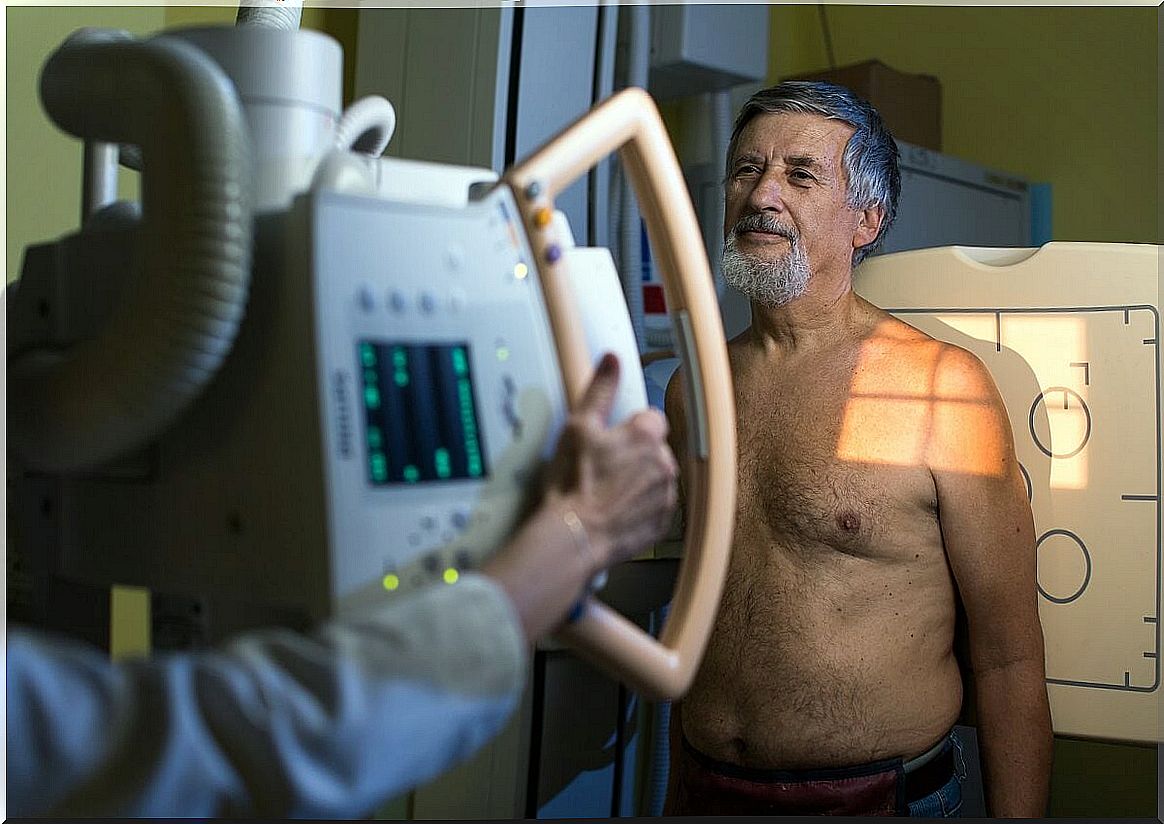Is It Dangerous To Get Hit In The Liver?
Getting hit in the liver is common in many circumstances, especially in wrestling. It is usually done to end an encounter, due to the possibility of inducing hypotension and fainting.
However, in a small percentage of patients these traumas can be fatal. Are you interested in knowing a little more about the subject? In the next space we will answer all your questions. Keep reading!
Information about the liver
The liver is an intra-abdominal organ that carries out many vital functions for humans. Most are metabolic in nature, since numerous nutrients from the diet are incorporated and processed in this organ. It is located in the upper and right quadrant of the abdomen.
Because of this, irrigation (the number of blood vessels that carry nutrients and remove waste) to the liver is abundant. The arterial system is given by the branches of the hepatic artery, which in turn comes from a branch of the abdominal aorta. The venous system is given by the portal vein.
Like several major organs, it is covered by a thin layer of connective tissue called Glisson’s capsule. The innervation of the tissue, which provides sensitivity to pain due to any type of irritation, is given by several structures, especially the vagus nerve and the phrenic nerve.
All these anatomical details allow us to understand why there is intense pain when receiving a blow to the liver. Direct stimulation of the aforementioned nerves, as well as bleeding caused by vascular injuries, are capable of producing intense pain.
Main causes of liver contusion
There are numerous situations in which a liver contusion can occur. This is any injury that significantly affects the structure and function of the organ, without an associated open wound. Some of these conditions are as follows:
- Hit in the liver as a boxing maneuver, known in English as a liver punch .
- Accidents, especially automobile ones.
- Situations of violence in general.
Of them, the liver punch deserves special attention . It is a well known and applied technique in this sport, and is often used as the final blow to end a fight. It is done here because it is in an easy-to-access anatomical space and without too much bone protection, since the liver is only partially covered by the ribs.
In addition, it has the “sporting advantage” of inducing a clinical picture known as vasovagal syncope. It is a condition in which the nervous and cardiovascular systems overrespond to some stimuli, causing transient hypotension, increased heart rate, and fainting.
This last phenomenon is explained by a rapid decrease in cerebral blood supply due to hypotension. In most cases, those affected recover quickly. A body weakened by a boxing match may be more susceptible to this event.

Symptoms of liver blow
Symptoms depend on the severity of the blow to the liver, which influences the compromised anatomical structures. If the trauma is mild, there is likely only abdominal tenderness over the impact site. This tends to disappear within a few hours, although it may require the use of common pain relievers.
In addition, injury to some small vascular structures can lead to extravasation of blood into soft tissues. The most direct result is the formation of a bruise, which can take several days to absorb on its own. It usually does not require treatment if it is a minor injury, although it does require medical evaluation.
Serious symptoms of a blow to the liver
Severe symptoms are usually the product of damage to major blood vessels, so the direct consequence is hemorrhage. Since the liver is such a vascular organ, it can advance quickly. Consequently, the prehospital detection of symptoms influences the prognosis of these patients.
Generally, there may be abdominal distention, pale skin, severe tenderness at the impact site (or throughout the abdomen), and increased tenderness in the area. Over time, the loss of blood can lead to a clinical picture of severe hypotension called hypovolemic shock, which can be life-threatening within minutes.
This last condition can be identified if the following signs and symptoms are also present:
- Arterial hypotension
- Increased heart rate (tachycardia).
- Altered mental state, confusion and drowsiness may appear.
- Cold extremities.
- Weak pulses.
Types of trauma to the liver
There are many classifications of trauma. One that is quite practical is the one that considers whether it was a penetrating or non-penetrating wound. The main difference lies in the presence of open lesions on the skin through which the affected organ was accessed.
Penetrating wounds are usually caused by firearms or knives, and in them the bleeding is more evident. However, it is likely that even though the lesion stops bleeding to the outside, internal bleeding is still developing that is difficult to control and may go unnoticed.
In the case of non-penetrating, these are frequent in certain conditions such as boxing matches. They are also dangerous, as they are less conspicuous at first, and symptoms may not be detected before hypovolemic shock has developed.
This type of bleeding can occur inside and outside the liver. If they occur on the outside, they are called subcapsular hematomas (since they appear below Glisson’s capsule).
According to the classification of liver injuries used by surgeons, these are the least serious. Those that affect the liver lobes inside are the most important.
Sometimes the bleeding can be secondary to a bone fracture, especially the ribs. One of these fragments may hit the liver and pierce the inside.
When to seek medical attention for a blow to the liver?
It is advisable to go to the doctor for an evaluation in any case of liver trauma. According to the clinical aspects, the professional could indicate other complementary studies, such as the following:
- Complete blood count.
- Plain X-ray of the abdomen.
- Abdominal echography.
- Computed tomography.
Of course, most of these tests can only be done if the patient is stable. In cases of hemodynamic instability (that is, that compromises the cardiovascular system and, therefore, life), surgical interventions with diagnostic and therapeutic objectives are likely to be chosen .
In the event of any of the aforementioned serious symptoms, especially those related to hypovolemic shock, immediate medical attention should be sought. Some patients are more susceptible to bleeding and complications, such as those with hemophilia.

Treatments
This aspect is controversial, although it depends on the severity of the symptoms. In general, doctors may take the following behaviors depending on the type of trauma:
- Mild and moderate: observation of the patient in the emergency area, with periodic controls through complementary studies and symptomatic treatment.
- Severe: surgical intervention and transfer to an intensive care unit.
Exploratory laparotomy is a minimally invasive technique that allows visualization of lesions without resorting to a typical abdominal examination. In case of detecting lesions that can be resolved by this method, the team of surgeons will do so during the procedure.
There is another method called embolization angiography. It is a procedure that involves visualizing the injured vascular structures by injecting a contrast agent. Later, with the use of special catheters, it is possible to place objects capable of sealing the broken and bleeding vessels.
Possible complications from a blow to the liver
The incidence of complications is highly variable, but increases as the bleeding increases. This value ranges between 7 and 25%, and the main clinical conditions are the following:
- Biliary fistulas: it is the appearance of ducts that allow the abnormal communication of two cavities, and can be internal or external. Sometimes they lead to significant fluid and electrolyte disturbances.
- Bilomas: it is the accumulation of bile contained by a capsule of connective tissue, and that can be located both inside and outside the liver.
- Abscesses: it is similar to the previous case, but it involves the accumulation of pus. It is the product of an infectious process.
- Hypovolemic shock.
Taking a hit to the liver can be dangerous. Although the vast majority do not lead to significant consequences, medical evaluation is essential to reduce mortality in severely injured patients.









